When folks say everything’s bigger in Texas, they might well be referring to the fact that it is the largest in land mass among U.S. states (except Alaska). But the adage is equally fitting in describing the Lone Star State’s ports, which are big and getting bigger.
Fueled to a great extent by energy industries, Texas ports are moving record cargo volumes while enhancing terminal infrastructure and looking to benefit from deeper, wider ship channels.
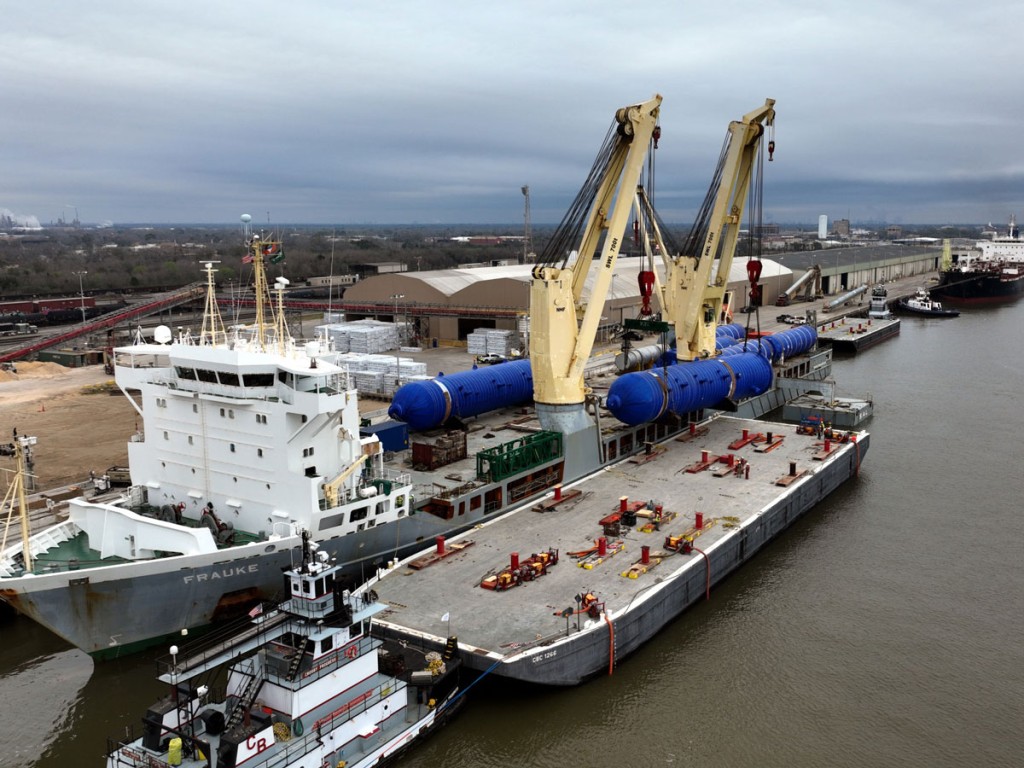
Port of Port Arthur
While extremely busy moving a variety of cargos, the Port of Port Arthur continues to advance multiple projects. The proliferation of new home construction starts in Texas is translating to strong volumes of imports of dimensional lumber, medium-density fiberboard, fencing and plywood. Also solid are imports of wood pulp, military cargo moves and exports of low-sulphur diesel.
The Port of Port Arthur has completed the $42 million expansion of Berth 5, adding 600 linear feet of dock space, as well as projects to widen the port’s entrance road and augment cargo and truck staging areas.
The biggest project currently under way is the $67 million undertaking to build all-new Berth 6, including 1,000-foot-long berth and backlands. Reroofing of Shed 2 is proceeding as well. Moving forward this year are a 5-acre expansion of laydown and rail facilities; a 2.2-acre augmentation of Berth 5 backlands; roadway resurfacing; asphalt capping, lighting and fencing at Lots 6 and 7; and the $14 million replacement of Shed 1. Additional land proximate to the present port is being acquired to further expand the facility’s footprint.
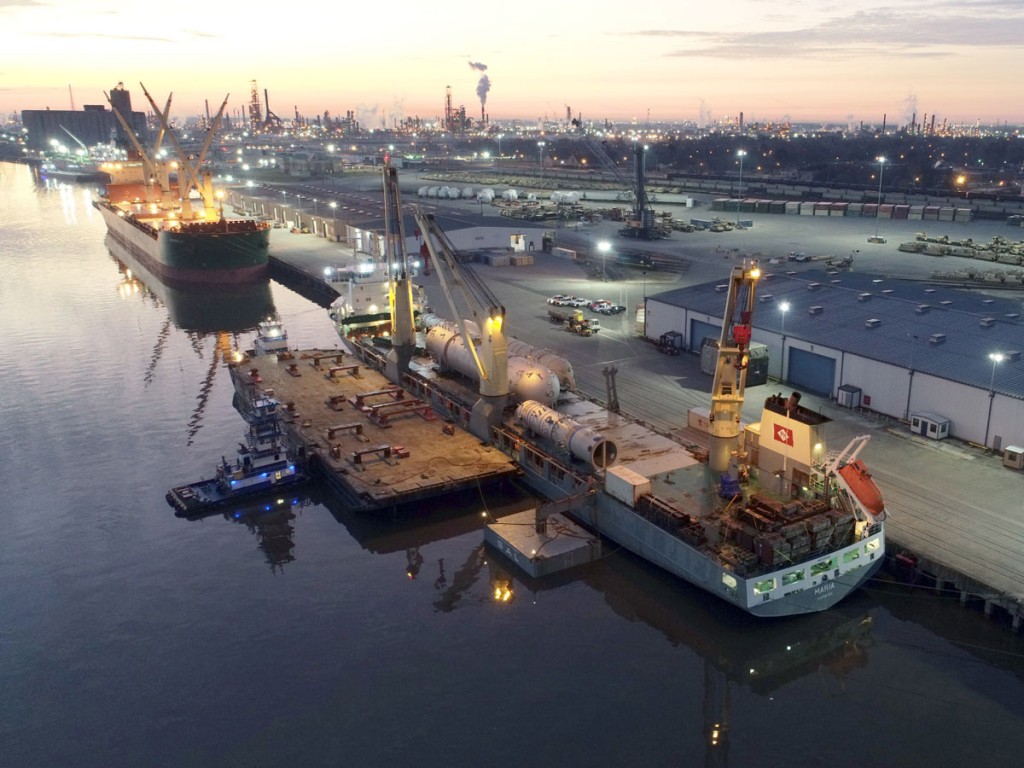
Port of Beaumont
Just a bit farther up the Sabine-Neches Waterway in the Golden Triangle area of Southeast Texas, about 40 miles inland from the Gulf of Mexico, the Port of Beaumont looks to have three major dock projects plus a new rail interchange track under construction by the end of 2022.
The $85 million Main Street Terminal 1 dock reconstruction, which kicked off in February with an eye toward completion in May 2024, is to create a 1,150-foot-long dock for handling military equipment, wind turbine components and forest products. Private partner Jefferson Energy Companies anticipates wrapping up construction of a $35 million liquid bulk dock at its Orange County terminal in April 2023. And building of a $25 million grain dock is to begin in September and be done in early 2024.
Slated to go to bid this summer, with projected completion in late 2023, is the $12.3 million Buford Rail Yard interchange track undertaking, which aims to double interchange handling capacity at the Port of Beaumont, benefiting movement of wind energy units, military equipment and grain and other dry bulk cargos.
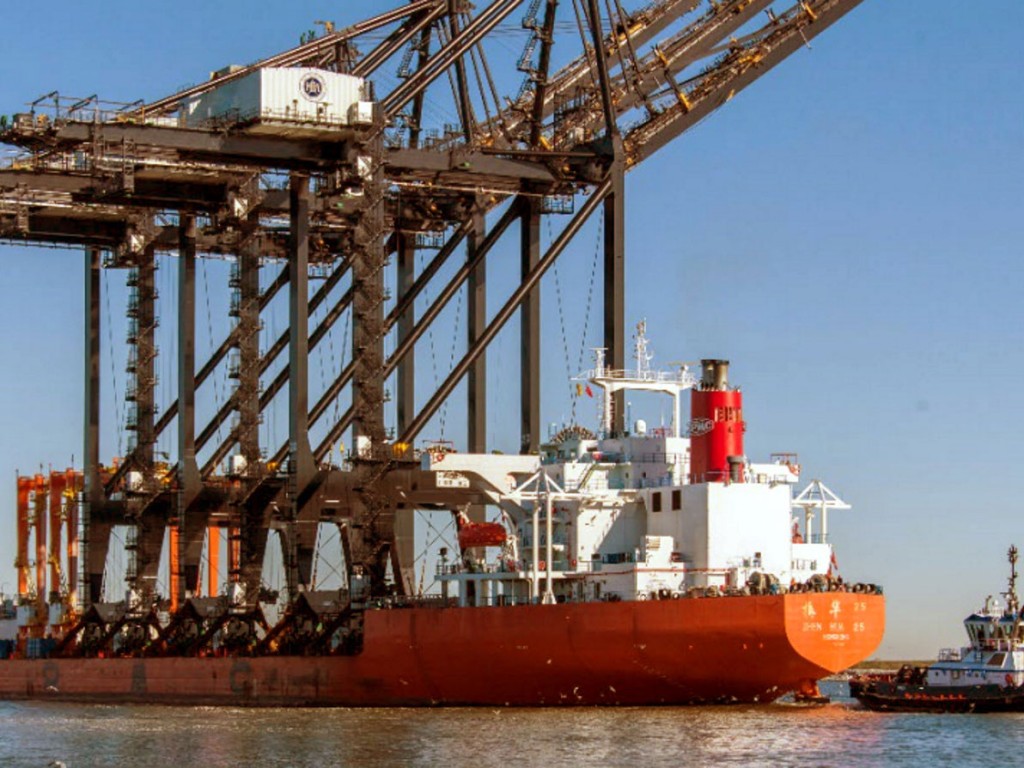
Port Houston
The Port Houston complex, comprising eight public terminals plus 200-plus private facilities, looks to build upon its leadership in total cargo tonnage handled among U.S. ports with addition of more quay cranes at its Bayport Container Terminal and advancement of channel deepening and widening.
With February arrival of a trio of new neo-Panamax cranes, the ship-to-shore gantry contingent at Bayport has increased to 28, helping support handling of continuing record container volumes. The new cranes, the port’s biggest yet, should facilitate working vessels with capacities of as many as 15,000 twenty-foot-equivalent container units, anticipated to call the port following completion of Houston Ship Channel expansion. That $1.1 billion endeavor, dubbed Project 11, could be finished by 2025, deepening the channel to 46.5 feet from its present 45 feet while widening it to 700 feet from 530 feet for its first 26 miles.
Port Houston also is adding yard space, opening additional gates, widening roadway access and developing the workforce pipeline to handle burgeoning business. In addition, the port recently announced its goal to be carbon neutral in the next 30 years.

Port of Galveston
Located on the deepwater Galveston Ship Channel, 45 minutes from open Gulf of Mexico waters and 10 minutes from Interstate highway access, with service via two Class I railroads and a short line, the Port of Galveston continues to handle growing volumes of a diverse mix of cargos, including bulk liquids, bulk fertilizer, wind energy components, general cargo, roll-on/roll-off units and new vehicles.
The Port of Galveston is further diversifying this year, with thousands of containers anticipated to move through its recently upgraded West Port Cargo Complex. The port also is benefiting from a new privately operated cargo laydown yard. And, beginning this year, liquefied natural gas is to be available to ships calling on the Port of Galveston.
In April, Galveston port officials got some great news, as $11 million in federal infrastructure funding was appropriated for use toward extending the 46-foot depth of the Galveston Ship Channel to allow deep-draft vessels to call on privately operated terminals along the final half-mile of the channel. The latest federal budget also allocates $25 million for maintenance of the Galveston channel.
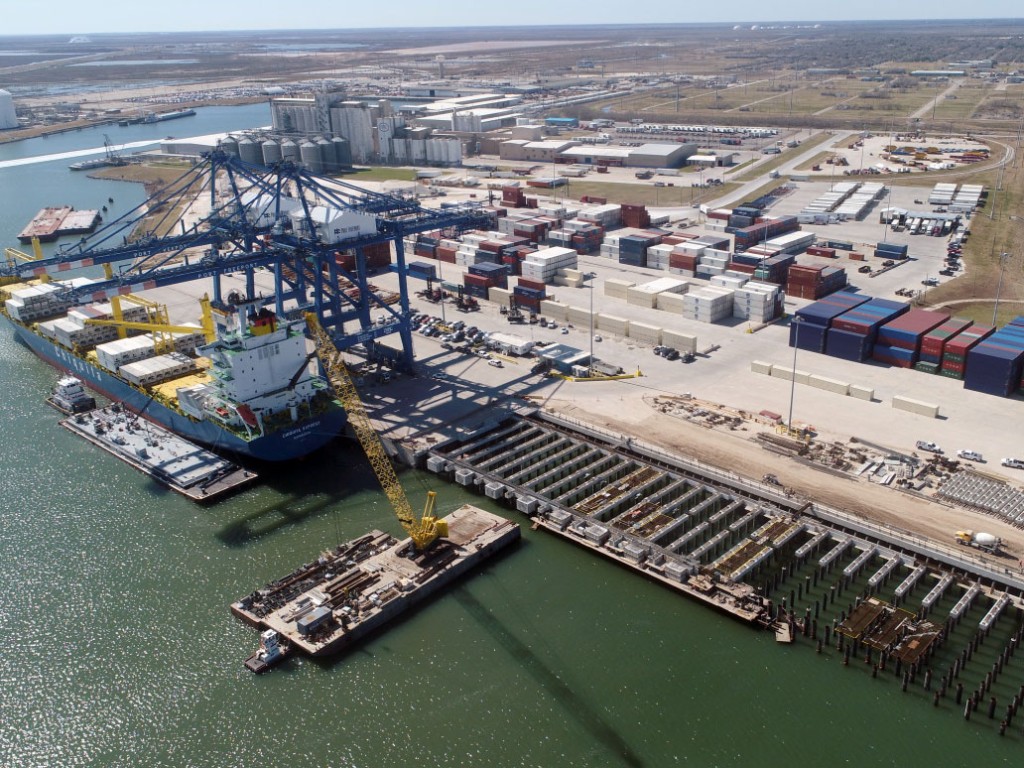
Port Freeport
About 50 miles southwest of Galveston along the Gulf of Mexico, 60 highway miles due south of Houston, Port Freeport is moving forward with expansion of terminal facilities while channel improvements proceed as well. Port Freeport is enjoying record growth thanks largely to gains in handling of roll-on/roll-off cargos and exports of liquefied natural gas and liquefied petroleum gas.
At Port Freeport’s Velasco Container Terminal, construction of 925-foot-long Berth 8 is on target for early 2023 completion, to facilitate accommodation of post-Panamax cranes and bolster the port’s container operations. Also at the Velasco facility, a new roll-on/roll-off ramp is slated to be finished in May 2023. In addition, rail improvements are getting under way at the terminal, where backlands stabilization is already completed.
The $295 million Freeport Harbor Improvement Project, to deliver channel depths ranging from 51 feet to 56 feet in addition to significant widening, is scheduled to be completed in its entirety in 2025. The federal share of $165 million is being augmented by a Port Freeport contribution of $130 million, funded via a 2018 voter-approved bond package.
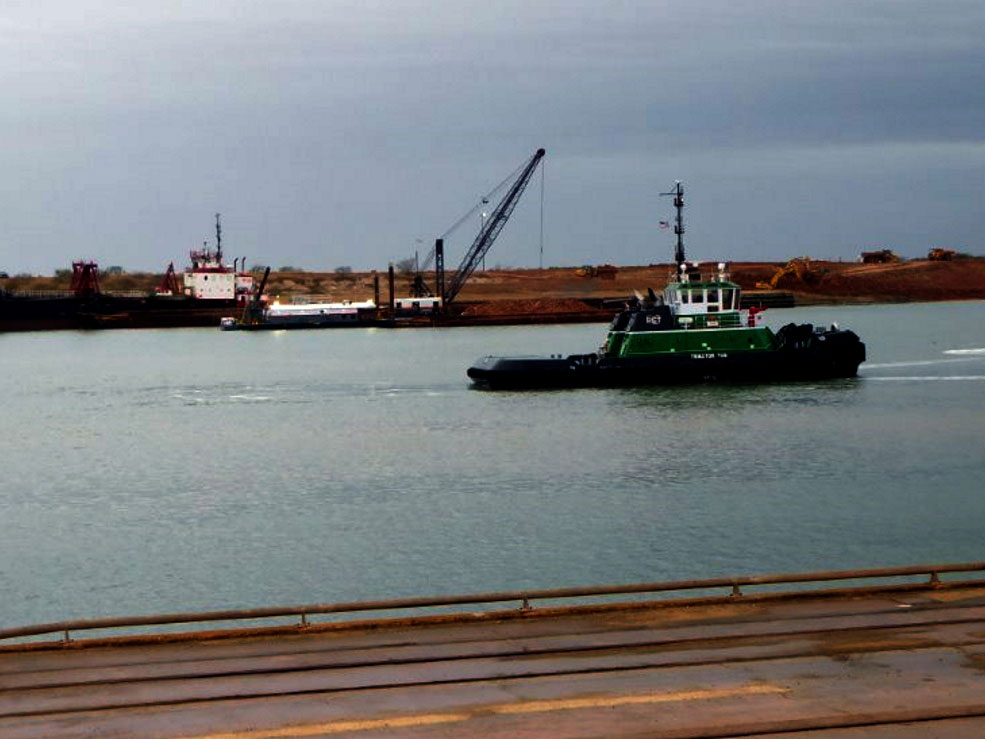
Calhoun Port Authority
Formerly known as Port of Port Lavaca-Point Comfort, the Calhoun Port Authority facility on the Matagorda Ship Channel looks to benefit from a major channel project as well.
The $218.3 million undertaking, anticipated to be completed next year, calls for deepening the federal channel to 47 feet from the present 38 feet plus widening the main channel to 300 feet from 200 feet, allowing transit of tankers carrying as many as 720,000 barrels. The project is being paid for by the port authority through a public-private partnership with crude exporter Max Midstream Texas LLC. Widening and deepening of the channel is projected to lead to more than $1 billion in economic growth and creation of 1,000-plus jobs over the next decade.
Meanwhile, the Calhoun Port Authority is proceeding with its South Peninsula Development Project, to entail three new deepwater berths and six barge berths plus 45 acres of backland. Design of the first deepwater berth and two barge berths is complete, and the port began mechanical dredging for the first deepwater berth in December at a cost of $7.1 million.
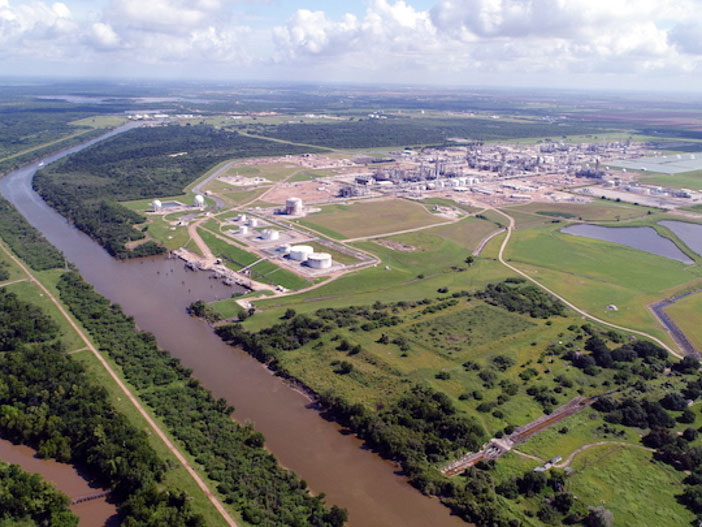
Port of Victoria
About 25 miles to the west of Port Lavaca, near the terminus of the 35-mile Victoria Barge Canal, linking to the Gulf of Mexico, the multimodal Texas Logistics Center at the Port of Victoria is emerging through collaborative efforts of the Victoria County Navigation District and Dallas-headquartered TNW Corp., a privately held operator of short-line railroads and logistics hubs.
Known for short as TXLC, the Victoria logistics center site is situated within a Foreign-Trade Zone and a Texas Enterprise Zone and is within a 2 1/2-hour driving distance from Houston, Austin and San Antonio. More than 2,000 acres are being touted as available for development at the site, which is to be served by Union Pacific and BNSF railroads.
Expansion of rail infrastructure at the TXLC site is under way, with a 1.9-mile rail loop and a 2,000-foot ladder track having been completed in April, thanks to a $6 million injection of funding via a Coronavirus Aid, Relief and Economic Security Act – or CARES Act – grant. The next development phase calls for addition of more than 42,000 feet of track.
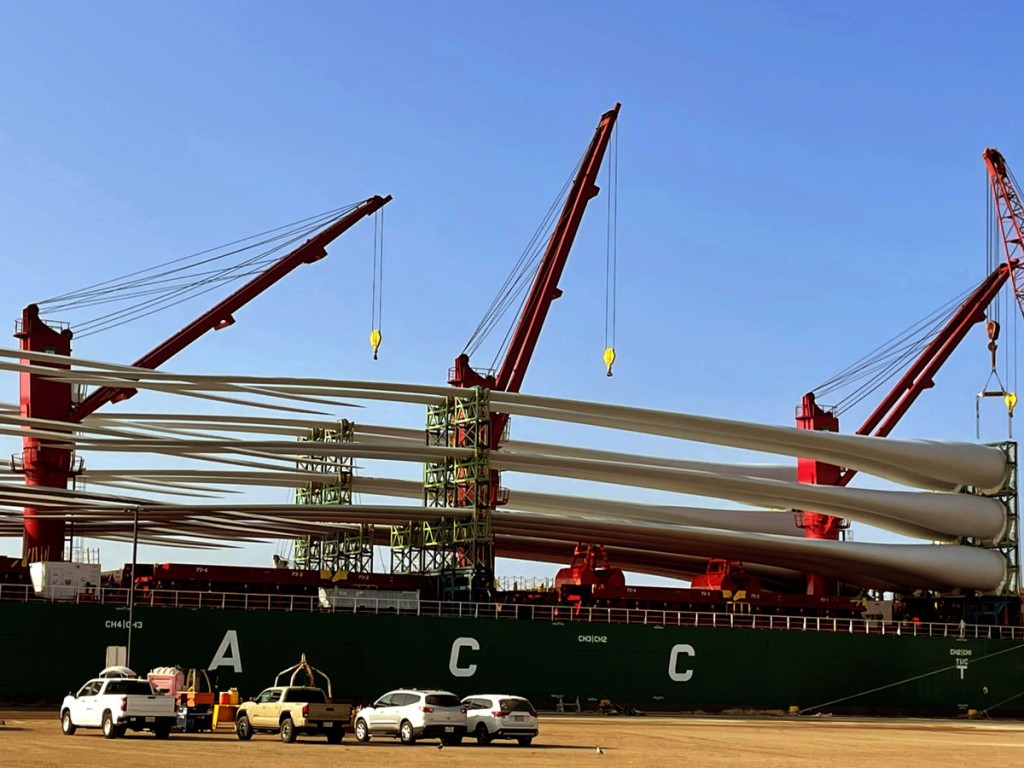
Aransas Terminal
Located on Harbor Island, near the entrance to the Corpus Christi Ship Channel, just 3 miles from open Gulf of Mexico waters, Aransas Terminal is among the most recent additions to Lone Star State port facilities.
Like many Texas ports, the 219-acre private terminal primarily serves the energy business, but with a slant toward renewables. In 2021, more than 50 cargo vessels carrying wind turbine components called on the terminal. Work is currently under way to increase the effective length of the main cargo dock to accommodate 700-foot-long vessels with drafts of as many as 35 feet. With the demise of renewable energy tax credits at the end of 2021, the current year is proving to be a challenging one for renewable energy component imports, and Aransas Terminal is actively diversifying its cargo service offerings, to include other breakbulk cargos and niche bulk markets.
On the oil and gas side, 2021 was a record year for offshore service vessels, or OSVs, berthing at Aransas Terminal. Dock 2 is being renovated and upgraded for further service as an OSV shore base.
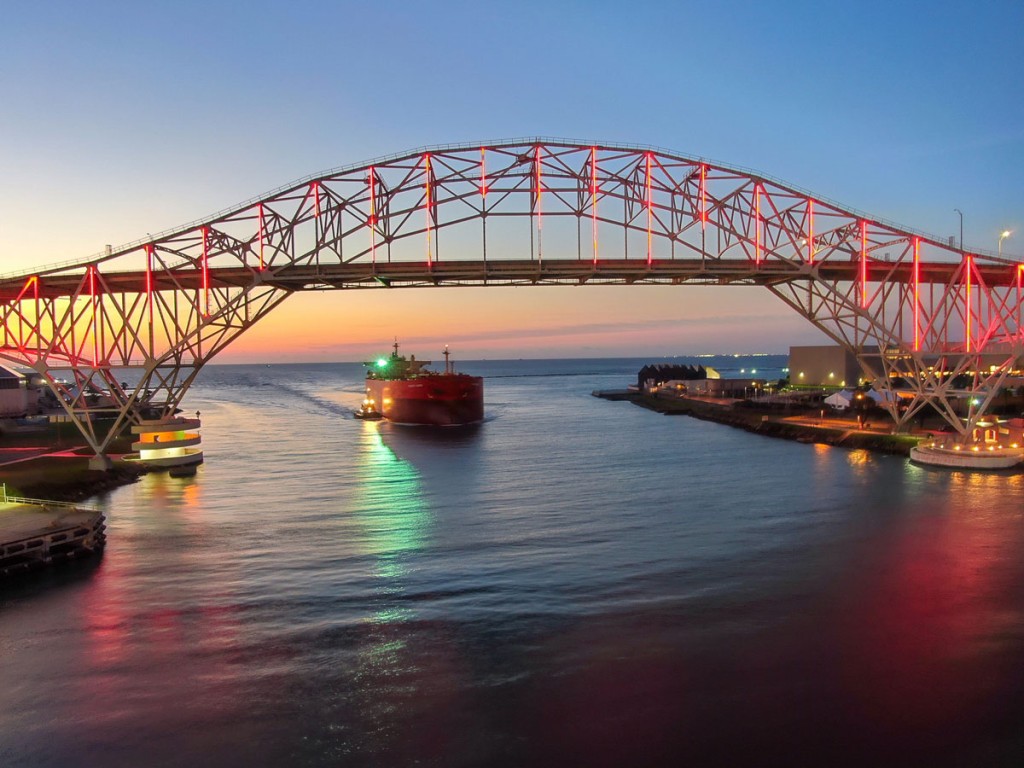
Port of Corpus Christi
Marketed as The Energy Port of the Americas, the Port of Corpus Christi is the leading U.S. export gateway for crude oil and ranks No. 2 in liquefied natural gas exports. The port is home to extensive facilities for such exports and has three major refineries in its region. The port’s service area extends to the Mexican market, two hours to the south.
Separate efforts continue to advance to deliver a higher-clearance Harbor Bridge over the Inner Harbor entrance to the port by 2024 and, by late 2023, to make the Corpus Christi Ship Channel the deepest – at 54 feet – and widest ship channel along the entire U.S. Gulf.
The port also is advancing multiple projects to enhance on-port infrastructure and establish itself as a premier hub for hydrogen production and carbon capture, utilization and storage, or CCUS. Bulk Dock 1 now features a new Liebherr 550 LPS rail-mounted crane, supporting discharge of barite, pig iron, metallurgic coal, aggregate and other dry bulk commodities, while open storage capacity and rail infrastructure have been augmented at the port’s Rincon Industrial Park.
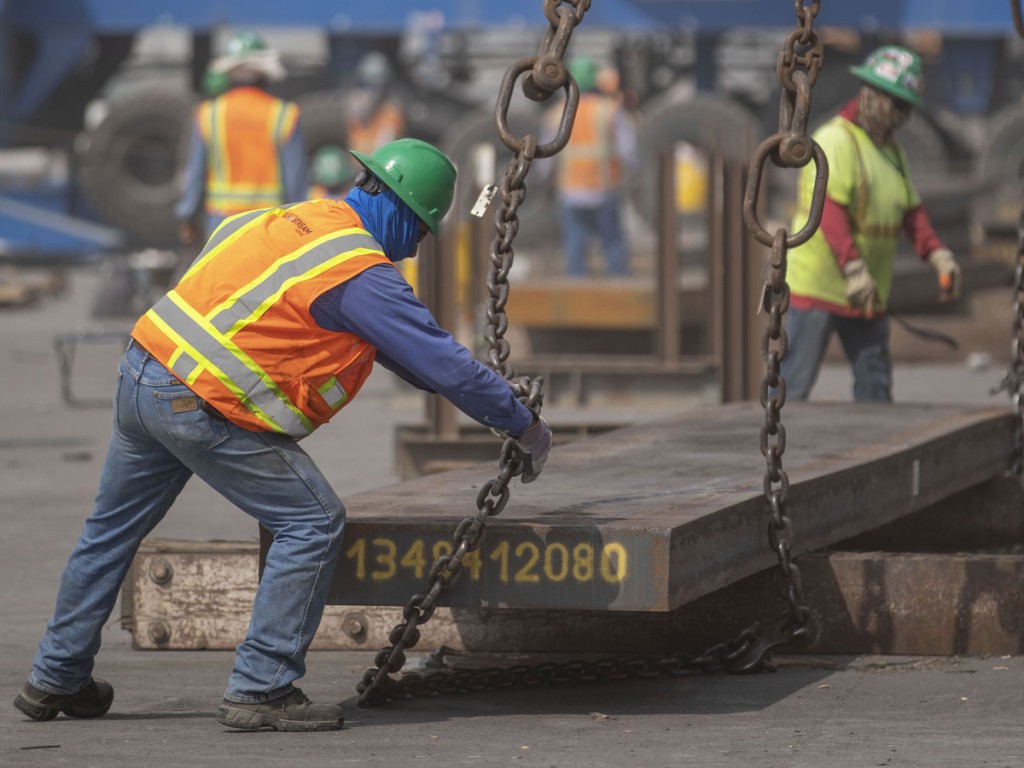
Port of Brownsville
The Port of Brownsville continues to build upon its position as a critical connection with Mexico, which lies just to its south. In March, the port celebrated completion of the 1.9-mile-long South Port Connector Road, directly linking internal port roadways with Texas Highway 4 and eventually offering a direct route to commercial traffic lanes on the Veterans International Bridge. The new road also provides convenient access to the nearby SpaceX launch site, facilitating shipping and receiving of space industry components.
As plans proceed toward deepening of the Brazos Island Harbor Channel to 52 feet from the present 42 feet, the port is moving forward with construction and rehabilitation of docks and other infrastructure enhancements, including development of capabilities to maximize efficient loading of open-top gondola railcars with steel slabs destined for the recently expanded Ternium mill in Pesquería, Nuevo León.
Sunoco LP is completing development of a $55 million refined products terminal at the Port of Brownsville. That facility, with 560,000 barrels of storage capacity, is designed to serve South Texas fuel distribution demands and facilitate Sunoco sales into Mexico.




